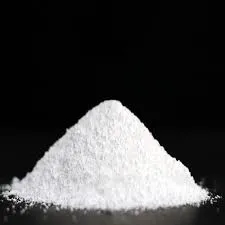Biocides for Cooling Towers An Essential Guide
Cooling towers are critical components in many industrial processes and power generation facilities, playing a vital role in temperature regulation. However, they also present a favorable environment for biological growth, particularly algae, bacteria, fungi, and other microorganisms. The proliferation of these organisms can lead to numerous problems, including reduced efficiency, increased maintenance costs, and serious health risks. To combat these issues, biocides are employed as a preventive measure to maintain the cooling system's cleanliness and performance.
Understanding the Role of Biocides
Biocides are chemical substances or microorganisms employed to control harmful organisms that can negatively impact the cooling tower's operations. Their primary functions in cooling systems include preventing biofouling, controlling pathogenic microorganisms, and mitigating the effects of corrosion. A well-planned biocide program not only keeps the cooling tower system clean but also enhances water quality and operational efficiency.
Types of Biocides
Biocides can be broadly categorized into two groups oxidizing and non-oxidizing biocides. Each type has its advantages and specific applications within cooling towers.
1. Oxidizing Biocides These include chlorine, bromine, and ozone, which are commonly used for their efficacy in killing a wide range of microorganisms. Chlorine is perhaps the most widely used due to its low cost and availability. However, it can lead to chlorination by-products that may be harmful or corrosive. Bromine is often preferred in situations where chlorine may not be as effective. Ozone, being a powerful oxidizer, decomposes quickly and does not leave harmful residuals, making it an environmentally friendly option.
2. Non-Oxidizing Biocides These include a diverse range of compounds, such as isothiazolinones, quaternary ammonium compounds, and others. Non-oxidizing biocides are ideal for long-term control because they tend to remain active in the system longer than oxidizing agents. They are often used in conjunction with oxidizing biocides to enhance overall efficacy and target specific organisms that may not be effectively managed by oxidizing methods alone.
Factors Influencing Biocide Selection
biocide for cooling tower

The choice of biocide for a cooling tower system depends on several factors, including
- Water Quality The chemical composition and quality of the water circulating through the cooling tower can necessitate different biocide strategies. - Microbial Type Understanding the specific microorganisms present in the system helps in selecting the most effective biocide for control. - Environmental Regulations Compliance with local and national regulations regarding chemical usage is critical in the selection of biocides. - Operational Considerations Factors such as cost, ease of application, and potential impacts on equipment and personnel also influence biocide selection.
Implementation of a Biocide Program
Implementing an effective biocide program involves a strategic approach that includes regular monitoring, testing, and adjusting treatment levels based on microbial load and system performance. This ensures that the chosen biocide is effective and minimizes the risk of resistance development among the microbial population.
A typical biocide application program includes
- Baseline assessment Conducting an initial microbial analysis to determine the levels and types of organisms present. - Regular monitoring Continuously sampling and testing the cooling water to track changes in microbial populations and assess the efficacy of the biocide treatment. - Adjusting dosages Tailoring the biocide dosage to meet the changing conditions within the cooling tower system.
Conclusion
Biocides are an indispensable element of cooling tower management, crucial for maintaining hygienic conditions and ensuring operational efficiency. By understanding the different types of biocides, their specific applications, and implementing a comprehensive biocide program, facility operators can effectively mitigate the risks posed by biological contaminants. This not only prolongs the lifespan of the cooling system but also safeguards public health and compliance with environmental standards. In an era where operational efficiency and environmental responsibility are paramount, the correct application of biocides in cooling towers serves both operational and ecological interests.

